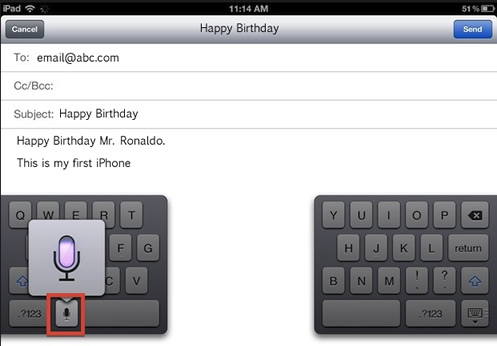Gmail's iOS App Trumps Mail
The Gmail iOS app works mostly like the company's web app, but in a far friendlier form. There are also a few new tricks up the program's sleeve that make it even easier to use the native app over the watered-down version through Apple's own Mail app. For starters, the Gmail iOS app supports notifications within iOS 5 and iOS 6. That's a huge improvement over using the web app, because users can now get notified of new e-mails immediately (using a built-in "push" service). You can then hop into Settings → Notifications to change which kinds of notifications you see, and how you want to be alerted to new messages. You can even have those notifications show up in your lock screen and the drop-down menu; or, for those who receive far too much e-mail, turn any of the notification options off.
Remember:
Apple claims that iOS 5 allows for "multi-tasking," but the reality is quite different than the multi-tasking you're accustomed to within Windows or OS X. Think of it more like "background support." You can let Safari or Mail load messages in the background while composing a graph in Apple's Numbers app, but you cannot load a split-app view that shows two or more applications onscreen simultaneously.
Another perk of using the Gmail iOS app is the ability to "Send-As." Basically, those using their single Gmail account as a repository for multiple other accounts (from work, school, etc.) will be able to reply to business-or education-related messages using their business-or education-related e-mail address. No more switching e-mail addresses or accounts in order to reply from a specific address; you can select which identity to send from right in the composition window.
Perhaps most importantly, Google's Gmail iOS app knows how to handle e-mail threads and archives. iOS 5/6 has improved its handling of threads, but I've still seen many occasions where the built-in Mail app rendered a 20+ message thread incorrectly, whereas this app always displays things just expect from within Gmail. Archives are also a major part of daily life for Gmailers, and if assigning a label to a message before archiving it is vital to keeping your inbox organized, you'll be happy to know that this portal nails it every single time. Colored stars, too, can only be fully executed within Gmail's iOS app.
Remember:
Unfortunately, Apple still refuses to let you choose a third-party app as your default e-mail client. This is supremely frustrating when you select E-Mail a Link from any number of applications that support sharing; if you don't have Apple's own Mail app configured, you cannot use Gmail, Sparrow, or any other third-party e-mail app to accomplish the task. You're simply out of luck.
Inputting Text via Keyboard and Voice Dictation
Unlike the iPad, there's no pull-apart split keyboard when using the iPhone in a horizontal orientation. Like the iPad, however, Apple still won't allow you to load a custom keyboard into iOS. Even with iOS 6, there's still a single factory keyboard option; there's no Swype or SwiftKey here. It's a crying shame, too.
Apple's stock keyboard was easily the best onscreen option when the iPhone launched in 2007, but these days, many superior alternatives exist for the Android. Instead of giving those same opportunities to iPhone users, Apple has implemented something else-voice dictation.
When composing a message in the Gmail iOS app, simply move your cursor (via touch, of course) to the body of the e-mail. Once there, you'll notice the virtual keyboard change ever-so-subtly. To the left of the spacebar, there's now a microphone icon (assuming you're using an iPhone 4S or iPhone 5). Tap that, and you'll soon be composing your e-mail with your vocal cords.

Note
Voice dictation is a magical thing, but unfortunately, it's the kind of magic that requires access to the Internet. Essentially, spoken words are ingested by the phone, shot out to a transcription robot via the Internet, and then returned to your screen. Without a Wi-Fi or cellular data signal, voice dictation simply won't work. It's a shame, too, as Google's own voice dictation works offline over on Android. Perhaps Apple will take its own service offline in the future, but it's online or bust for now.
Dictating e-mails (or any document, really) can be a huge time saver, but it's also a point of frustration for many. To get the best results from the voice dictation feature, first recommend being on Wi-Fi or a 3G/4G data connection. If you're in a remote locale where only GPRS or EDGE (2G or older) data services are available, the service will struggle to return results. Secondly, try to speak clearly and boldly in a room with minimal background noise, and aim your mouth directly at the microphones on the bottom of your iPhone. Pausing and stuttering will almost certainly introduce errors in the text that are eventually returned to your display.
Finally, try to only speak three to four sentences at a time. If you speak for much longer, the voice dictation app will simply cut you off mid-sentence, forcing you to remember where you left your train of thought. It's also worth mentioning that dictating generally means "talking like a robot." You have to think ahead for the best results-you literally need to say the word "comma" if you want a comma to be inserted. Same goes for "new paragraph" and "question mark." If you speak like you're writing-instead of like you're talking to a best bud face-to-face-you'll face far fewer frustrations.
Note
On Gmail a lot here, mostly because it's widely viewed as the best web-based e-mail service out there. Currently, the major rivals-Hotmail and Yahoo! Mail-do not have native iOS apps, but both can be set up within Apple's Mail app. Still, having a dedicated app ensures that Gmailers get access to the bells and whistles that make this service so great.
